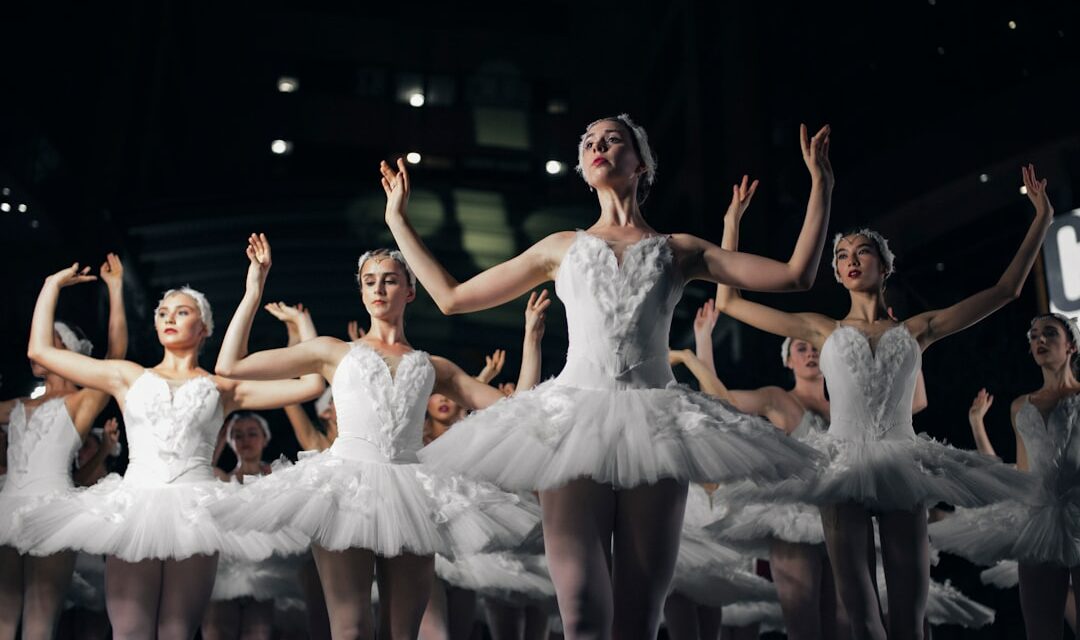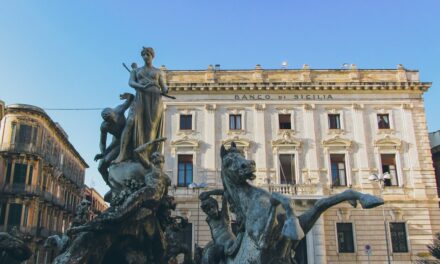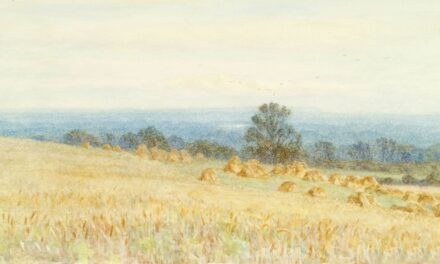Edgar Degas, born Hilaire-Germain-Edgar De Gas on 19 July 1834 in Paris, France, was the eldest of five children in an affluent family. His father was a banker, and his mother hailed from a Creole family in New Orleans. The Degas family possessed strong connections to the art world, which would later influence Edgar’s career.
As a youth, Degas exhibited an early interest in drawing and painting, with his parents encouraging his artistic pursuits. He attended the Lycée Louis-le-Grand, where he studied literature and classics, though his true passion lay in art. In 1853, Degas enrolled at the École des Beaux-Arts in Paris, studying under Louis Lamothe, a former pupil of the renowned Neoclassical painter Jean-Auguste-Dominique Ingres.
Degas’ early education established the foundation for his future success as an artist, and he swiftly developed a reputation for his adept draftsmanship and keen eye for detail. Degas’ education at the École des Beaux-Arts exposed him to traditional academic art techniques, whilst also introducing him to the emerging Impressionist movement. He admired the work of artists such as Édouard Manet and Claude Monet, who were challenging academic art conventions with their innovative use of light and colour.
Degas’ early exposure to these artists would have a lasting impact on his own style and approach to painting. His education also included extensive travel throughout Europe, where he studied the works of the Old Masters and gained a deep appreciation for historical art. This broad exposure to different artistic traditions would later inform Degas’ eclectic approach to painting, as he drew inspiration from a wide range of sources.
Degas’ early life and education provided him with a strong foundation in both traditional and avant-garde art, setting the stage for his future success as a groundbreaking artist.
Summary
- Edgar Degas was born into a wealthy family in Paris in 1834 and received a classical education at the Lycée Louis-le-Grand.
- Degas was heavily influenced by the works of Ingres and Delacroix, and his style evolved from historical and mythological subjects to contemporary scenes of Parisian life.
- Degas was fascinated by the world of ballet and produced numerous paintings and sculptures of ballet dancers, capturing their grace and movement.
- In addition to his ballet works, Degas also created striking portraits and innovative landscapes, often experimenting with unusual compositions and viewpoints.
- Degas’ controversial works, such as his depictions of brothels and women bathing, sparked debate and criticism, but also pushed the boundaries of traditional art.
Influences and Style
Early Training and Influences
His early training at the École des Beaux-Arts instilled in him a rigorous attention to draftsmanship and composition, which is evident in his precise and detailed paintings. However, Degas was also drawn to the spontaneity and vibrancy of Impressionist painting, and he incorporated elements of this style into his own work.
Stylistic Features
His use of bold brushstrokes and vibrant colours reflects the influence of artists such as Monet and Manet, while his keen observation of light and movement demonstrates his commitment to capturing the fleeting moments of everyday life. One of Degas’ most distinctive stylistic features is his use of unusual compositions and viewpoints. He often depicted his subjects from unconventional angles, such as from above or below, which created a sense of immediacy and intimacy in his paintings.
Innovative Approaches
This unconventional approach to composition was influenced by his interest in photography, which was a relatively new medium at the time. Degas admired the way that photography could capture candid moments and unusual perspectives, and he sought to emulate this in his own work. Overall, Degas’ style was a unique blend of traditional academic techniques and innovative Impressionist approaches, resulting in paintings that were both technically masterful and emotionally evocative.
The Ballet Dancers

One of Degas’ most iconic subjects was the ballet dancers of Paris. He was captivated by their grace and beauty, and he devoted much of his career to capturing their movements on canvas. Degas’ interest in ballet was sparked by his visits to the Paris Opéra, where he was mesmerized by the dancers’ performances.
He became a regular visitor to the Opéra, often sketching the dancers as they rehearsed or performed. His fascination with ballet led to a series of paintings and sculptures that are now considered some of his most famous works. Degas’ depictions of ballet dancers are notable for their sense of movement and energy.
He often portrayed the dancers in mid-motion, capturing their fluid gestures and dynamic poses. His use of unusual compositions and viewpoints added to the sense of immediacy in these works, creating a feeling of being right in the midst of the action. Degas’ paintings of ballet dancers are also notable for their attention to detail, as he meticulously rendered the dancers’ costumes and the opulent surroundings of the Opéra.
Overall, Degas’ ballet dancers are a testament to his skill as a painter and his ability to capture the beauty and vitality of the human form in motion.
Portraits and Landscapes
In addition to his famous ballet scenes, Degas also produced a significant body of work depicting portraits and landscapes. His portraits are notable for their psychological depth and emotional resonance, as he sought to capture the inner lives of his subjects. Degas had a keen eye for capturing the nuances of human expression, and his portraits often convey a sense of introspection and vulnerability.
He was particularly skilled at depicting women, capturing their strength and resilience in the face of societal expectations. Degas’ landscapes are equally impressive, showcasing his ability to capture the beauty of the natural world. He often painted scenes from his travels throughout Europe, depicting lush countryside vistas and serene coastal views.
His landscapes are notable for their atmospheric quality, as he expertly rendered the play of light and shadow across the landscape. Degas’ landscapes are also notable for their sense of tranquility and stillness, providing a counterpoint to the energy and movement found in his ballet scenes. Overall, Degas’ portraits and landscapes demonstrate his versatility as an artist and his ability to capture the full range of human experience.
Degas’ Controversial Works
While Degas is celebrated for his depictions of ballet dancers and everyday life, some of his works were considered controversial in their time. One such example is his series of brothel scenes, which depicted intimate moments between women in various states of undress. These works were considered scandalous at the time for their frank portrayal of female sexuality and were not publicly exhibited during Degas’ lifetime.
However, they are now considered important examples of Degas’ exploration of human intimacy and vulnerability. Another controversial aspect of Degas’ work was his treatment of race and ethnicity. Some of his works depicted scenes from New Orleans, where his mother’s family had roots.
These works often portrayed African American women in domestic settings, raising questions about Degas’ portrayal of race and power dynamics. While these works were not overtly political in nature, they have sparked debate among art historians about Degas’ treatment of race in his art. Overall, Degas’ controversial works provide insight into the complexities of his artistic vision and his willingness to explore taboo subjects.
Later Years and Legacy

Overcoming Physical Limitations
Despite these physical limitations, Degas remained an active member of the Parisian art scene until his death on 27 September 1917. Degas’ legacy is far-reaching, as his innovative approach to painting had a profound impact on the art world. His willingness to challenge artistic conventions paved the way for future generations of artists to explore new modes of expression.
Influence on Fellow Artists
His influence can be seen in the work of artists such as Mary Cassatt and Henri de Toulouse-Lautrec, who were inspired by Degas’ bold compositions and emotional depth.
A Legacy of Innovation
Overall, Degas’ legacy is one of artistic innovation and creative daring, as he pushed the boundaries of what was possible in painting.
Degas’ Impact on the Art World
Degas’ impact on the art world is immeasurable, as he played a pivotal role in shaping the course of modern art. His willingness to experiment with new techniques and subject matter paved the way for future generations of artists to explore new modes of expression. His use of unconventional compositions and viewpoints challenged traditional notions of perspective and representation, opening up new possibilities for artistic innovation.
Degas’ influence can be seen in a wide range of artistic movements, from Post-Impressionism to Fauvism. His emphasis on capturing fleeting moments and everyday life laid the groundwork for future generations of artists to explore themes of modernity and urban experience. His commitment to depicting the human form in motion also had a lasting impact on the development of photography and film, as artists sought new ways to capture movement and energy.
Overall, Degas’ impact on the art world is one of enduring significance, as his innovative approach to painting continues to inspire artists today. His willingness to challenge artistic conventions and push the boundaries of what was possible in painting has left an indelible mark on the history of art, ensuring that his legacy will continue to resonate for generations to come.
If you are interested in learning more about the art movement that followed Impressionism, you should check out this article on Post-Impressionism. It provides a comprehensive overview of the artists and their works that were part of this influential movement. From Vincent van Gogh to Paul Cézanne, Post-Impressionism was a diverse and innovative period in art history. You can read more about it here.
FAQs
Who was Edgar Degas?
Edgar Degas was a French artist famous for his paintings, sculptures, prints, and drawings. He is best known for his depictions of dancers and racehorses.
When was Edgar Degas born?
Edgar Degas was born on July 19, 1834, in Paris, France.
What style of art is Edgar Degas known for?
Edgar Degas is known for his contributions to Impressionism, particularly for his depictions of dancers and his use of bold, unconventional compositions.
What are some of Edgar Degas’ most famous works?
Some of Edgar Degas’ most famous works include “The Dance Class,” “L’Absinthe,” “The Bellelli Family,” and “The Little Fourteen-Year-Old Dancer.”
Did Edgar Degas work in any other artistic mediums?
In addition to painting, Edgar Degas also worked in sculpture, printmaking, and drawing. He was particularly known for his innovative use of pastels.
What was Edgar Degas’ influence on the art world?
Edgar Degas was a significant figure in the Impressionist movement and is considered one of the founders of Impressionism. His work has had a lasting impact on the art world, particularly in the realms of composition and subject matter.




